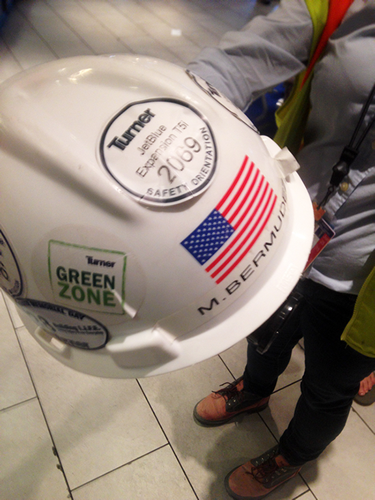A.
Peel off half of the liner. Use the liner-covered half to slide the sticker into position before sticking it to the hard hat. When the sticker is in the desired position, press the sticky part onto the hard hat and peel off the remaining portion of the liner. For best results, make sure the center of the sticker is the first part to make contact with the hard hat. From the center, gently work your way to the sides. Before pressing the decal firmly to the hard hat, make sure all sides are lightly stuck down. At first it will look like there are wrinkles. Smooth out the wrinkles, making sure to work around the decal evenly, so it does not bunch on one side. As always, follow manufacturer guidelines regarding the use of hard hat stickers; if you have a question, contact your safety professional.
